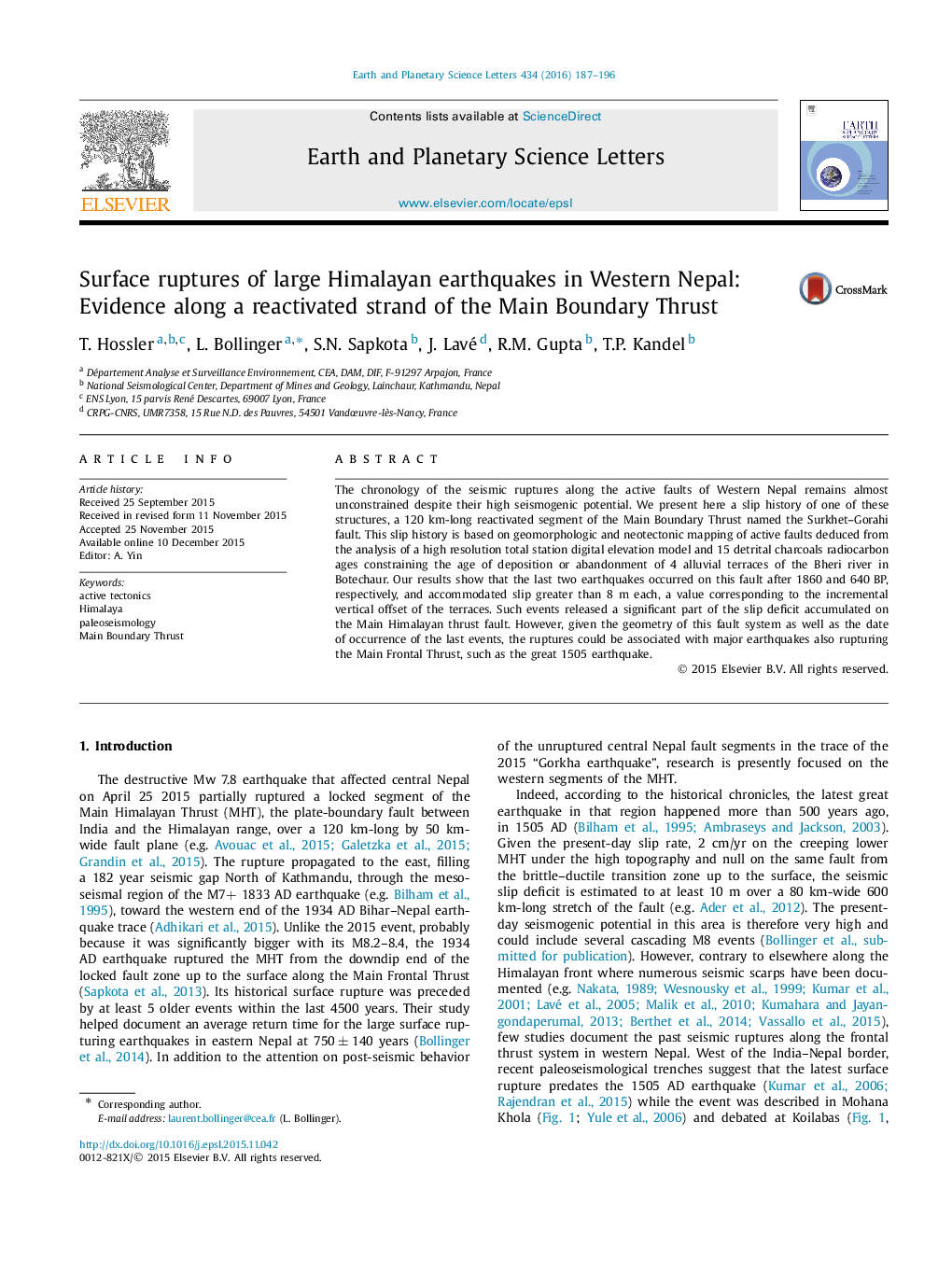| Article ID | Journal | Published Year | Pages | File Type |
|---|---|---|---|---|
| 6427737 | Earth and Planetary Science Letters | 2016 | 10 Pages |
â¢Two large earthquakes surface rupture in 2000 years in Western Nepal.â¢8 meters of vertical offset per event.â¢Splay fault activated by largest Himalayan earthquakes including 1505 AD.
The chronology of the seismic ruptures along the active faults of Western Nepal remains almost unconstrained despite their high seismogenic potential. We present here a slip history of one of these structures, a 120 km-long reactivated segment of the Main Boundary Thrust named the Surkhet-Gorahi fault. This slip history is based on geomorphologic and neotectonic mapping of active faults deduced from the analysis of a high resolution total station digital elevation model and 15 detrital charcoals radiocarbon ages constraining the age of deposition or abandonment of 4 alluvial terraces of the Bheri river in Botechaur. Our results show that the last two earthquakes occurred on this fault after 1860 and 640 BP, respectively, and accommodated slip greater than 8 m each, a value corresponding to the incremental vertical offset of the terraces. Such events released a significant part of the slip deficit accumulated on the Main Himalayan thrust fault. However, given the geometry of this fault system as well as the date of occurrence of the last events, the ruptures could be associated with major earthquakes also rupturing the Main Frontal Thrust, such as the great 1505 earthquake.
